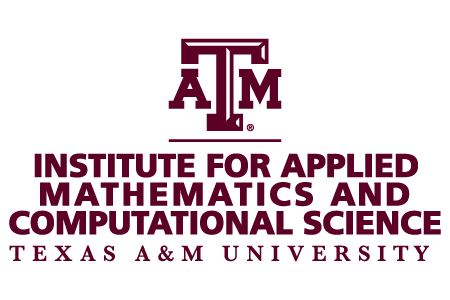Leader: Marvin Adams
Co-leaders: Valerie Taylor and Craig Douglas
Research Core 3 addresses topics related to data-driven computational science that is able to incorporate data into an executing application dynamically, in some cases including the ability of the application to dynamically steer the measurement process.
Synergy with Other Research Cores
Data-driven computational science relies upon computational models of physical systems and is therefore a “customer” of advances that will be created in the first core area. Data-driven applications also seek to infer system characteristics from measurements, and thus this area overlaps synergistically with the second core area.
All three core areas must work within the context of uncertainty and benefit from the development of statistically sound, unified treatments of uncertainties. For example, in forward multiscale modeling and simulation, input data are uncertain and these uncertainties should be propagated to uncertainties in output quantities of interest. In an inverse problem, proper treatment of measurement uncertainties and errors must be integrated with treatment of uncertainties associated with “forward” models. In a data-driven application, all of these uncertainties are present and must be treated systematically.
Visualization plays an integral role in the other two core areas as well. Advances in visualization enable researchers in all core areas to make more rapid progress. Further, visualization advances make the products of all three core areas far more useful to the applications they will support.
Software re-use, supporting separation of concerns, and real-time quality support for applications will increase reliability, reduce development time, and teach students how to be much more productive.
Research Directions
Data-driven computational science is ripe for multidisciplinary research to build applications, algorithms, measurement processes, and software components from which tools can be developed to solve diverse problems of regional and international interest. The advances that will result, including enhanced repositories of software components and applications, will be of great value to industry and governments, and will set the stage for further valuable research and development. A comprehensive list of ongoing state-of-the-art projects is kept up to date athttp://www.dddas.org/ (in the projects area).
IAMCS focuses on several research thrusts in which advances should significantly enhance the ability of data-driven computational science to bring its tremendous benefits to a wide array of applications. The research thrusts upon which IAMCS focuses require integrated teams with expertise in computer science, informational science, computational sciences, visualization, cyberinfrastructure, and the application areas.
Research Thrusts & Example Projects
Research Thrust 1: Effective assimilation of streams of data into ongoing simulations
The thrust areas revolve around the data streams that enter a data-driven computational science application:
Noisy but with known statistics (which necessitates the use of stochastic methods, including filters and smoothers);
Received from a large number of scattered remote locations (which requires assimilation to a usable computational grid);
Missing bits or transmission packets, as for example in wireless transmissions;
Injecting dynamic and unexpected data input into the model; and
Limited to information only at specific scales specific to each sensor type
Research Thrust 2: Interpretation, analysis, and adaptation to assist the analyst and to ensure the most accurate simulation
A data-driven application should include interpretation and analysis tools to help identify significant patterns and trends; help analyze causes and potential solutions of problems; help adapt simulation models, methods, and algorithms; and in some cases help direct adaptable sensors to acquire the most useful data. This thrust area addresses the following:
Tracking and steering of measurements, models, reports, visualization, etc.
Translation components to rectify mismatches between simulation output and observational data
Warm restarting of simulations that have drifted from reality
Research Thrust 3: Cyberinfrastructure to support data-driven simulations
Cyberinfrastructure includes physical devices and software services necessary for execution and analysis of data-driven applications. With respect to physical devices, cyberinfrastructure includes the networks, computational resources, data storage, and visualization displays that are generally housed in different geographic locations, but are combined for use with given applications. The software services refer to resource dependent and resource independent middleware components. This thrust area addresses the following:
Application program interface and middleware components for designing and creating a data-driven computational-science problem-solving environment or stand-alone application
Better scheduling of computational and network resources so that multiple models, possibly running at different locations, can be coordinated and data exchanged in a timely manner

